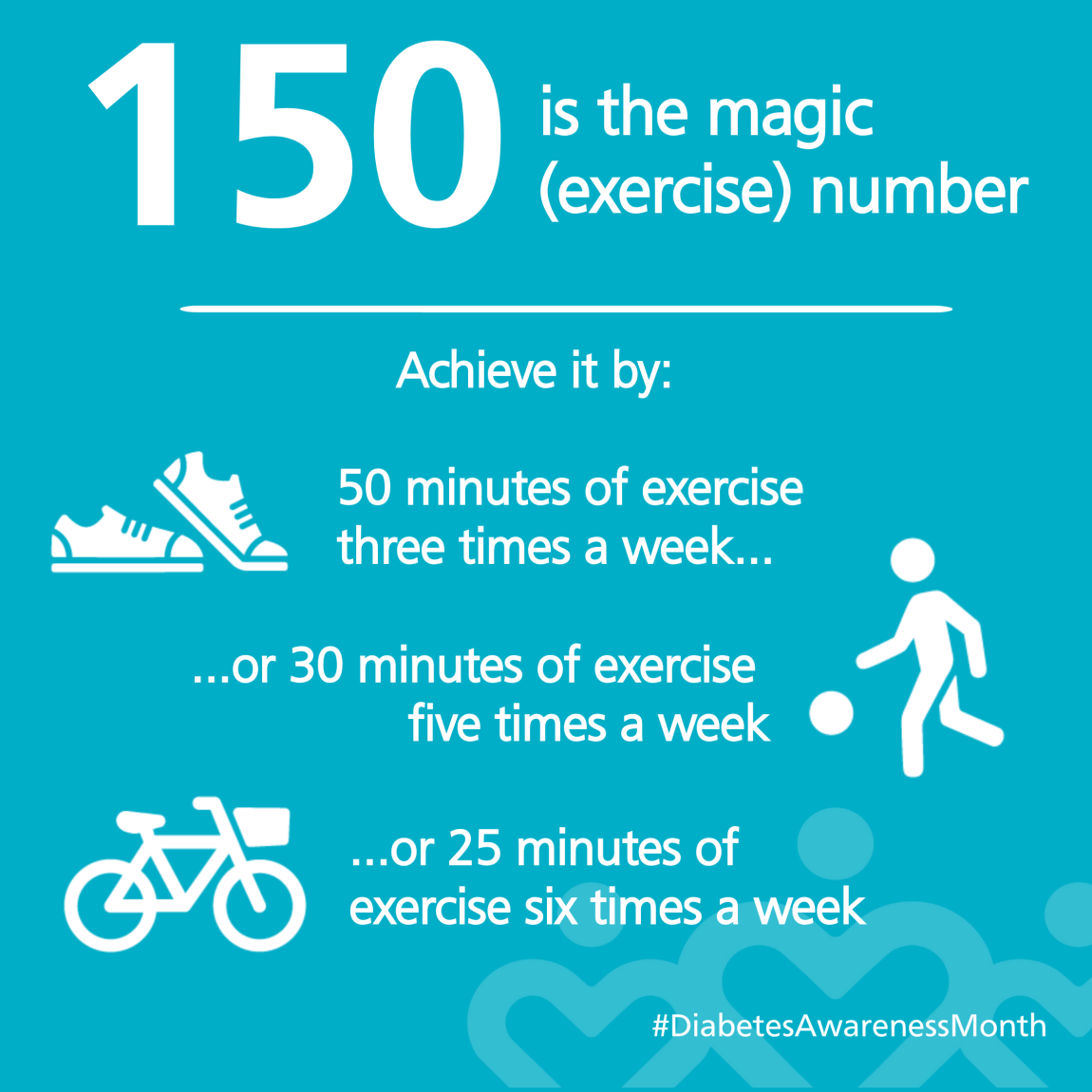Getting 150 minutes of moderate intensity exercise each week can help you manage your diabetes. But dedicating that much time to exercise can seem daunting if you’re busy, don’t enjoy working out or have diabetes-related complications that make physical activity difficult. Here are some tips on how to make it manageable:
Start small. If you’re new to fitness, create goals that help you gradually build toward 150 minutes of exercise. If you sit at a desk all day and don’t have an exercise routine, your first goal might be to get up from your desk twice every hour and do a walking tour of the office. From there, add 10 minutes of exercise a week until you reach the 150-minute mark. It’s not about how long it takes you to get to that goal, what’s more important is taking the steps to get there.
Split it. Don’t do it all at once! Split your exercise into shorter, easier-to-achieve, times. For example, instead of trying to do all 150 minutes in one day, opt instead for 25 minutes Monday-Saturday.
It all counts. As long as you keep your heartrate up, any exercise is good for you – even if it doesn’t involve the gym! Do 10 minutes of active vacuuming in the morning, another 15 of brisk walking in the afternoon and you’ll have achieved your health goals (as well as a cleaner house!).
Change it up. Getting fit is much easier if you choose exercise you enjoy. A dance class, a walking club, a few hours of hoops – exercise that you like can keep you motivated.
You can read even more tips on how to make exercise part of your anti-diabetes strategy here:
Before you start any exercise routine, please get approval from your HealthCare provider to ensure you do not have any other health risks preventing you from exercising.
